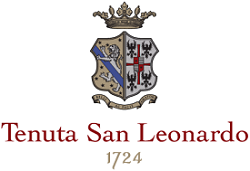Country:
 Italy Region: Trentino-Alto Adige
Italy Region: Trentino-Alto Adige
Type: Red Style: Bold Smooth
Drinking: 2019 - 2034
 90% Merlot, 10% Carmenère A refined blend of Merlot and Carmenère, Villa Gresti exhibits sublime texture and silk-smooth tannins. This is a wine of great potential for aging which represents an alternative interpretation of San Leonardo’s unique terroir.
90% Merlot, 10% Carmenère A refined blend of Merlot and Carmenère, Villa Gresti exhibits sublime texture and silk-smooth tannins. This is a wine of great potential for aging which represents an alternative interpretation of San Leonardo’s unique terroir.

Tenuta San Leonardo in Trentino has been home to the Guerrieri Gonzaga family for over three hundred years, but it is only since the second half of the twentieth century, when Marchese Carlo took over, that this estate began to take wine production seriously. Following a spell working at Tenuta San Guido with the creator of Sassicaia, Mario Incisa della Rocchetta, he was inspired to see if the clay-limestone soils of his family estate could yield similar results to those achieved by his mentor. In 1978 the first Cabernet Sauvignon vines joined the Merlot and Carmenère that had long been planted, and in 1982 the first vintage of the flagship San Leonardo was produced. The wine has changed very little since then. The estate covers an overall area of 300 hectares, of which the vineyards, planted to red grapes beginning at an elevation of 150 metres, amount to 30 hectares. Merlot is planted in pebble-rich soils that were once the bed of a tributary of the Adige, while Cabernet Sauvignon and the old vineyards of Carmenère are in predominantly sandy soils. All are well-drained, low-fertility soils that yield wines with truly unusual levels of anthocyanins, and not just for the Trentino. In 2015, San Leonardo launched a project of conversion to organic viticulture, which concluded successfully in late 2018 with the award of official certification. In the same year, the BWA Friends of Biodiversity organisation certified San Leonardo as a Friend of Biodiversity, testifying to San Leonardo ́s deep commitment to preserving the character of its growing area. Recent vintages display the same timeless elegance and subtlety as the first, traits that are echoed through the rest of the range, and that have helped secure San Leonardo’s place in the pantheon of great Italian wineries.
- Carmenérè
No Information Currently Available!
- Merlot
The most widely planted grape in Bordeaux and a grape that has been on a relentless expansion drive throughout the world in the last decade. Merlot is adaptable to most soils and is relatively simple to cultivate. It is a vigorous naturally high yielding grape that requires savage pruning - over-cropped Merlot-based wines are dilute and bland. It is also vital to pick at optimum ripeness as Merlot can quickly lose its varietal characteristics if harvested overripe.
In St.Emilion and Pomerol it withstands the moist clay rich soils far better than Cabernet grapes, and at it best produces opulently rich, plummy clarets with succulent fruitcake-like nuances. Le Pin, Pétrus and Clinet are examples of hedonistically rich Merlot wines at their very best. It also plays a key supporting role in filling out the middle palate of the Cabernet-dominated wines of the Médoc and Graves.
Merlot is now grown in virtually all wine growing countries and is particularly successful in California, Chile and Northern Italy.
| Who | Score |
Start |
End |
Notes |
|---|---|---|---|---|
| Alison Napjus Wine Spectator Oct 2019 |
90/100 | 2019 | 2024 | An elegant red, fresh and medium- to full-bodied, with sculpted tannins and a concentrated range of cassis, dusty sage, loamy mineral and graphite notes that linger on the finish. Merlot and Carmenère. Drink through 2024. |
| Ian D'Agata www.vinous.com Jan 2019 |
91/100 | 2020 | 2028 | Bright red ruby. Refined aromas of red fruit, spices, minerals and herbs. Then dense and multilayered, with a juicy tang to the red and blue fruit flavors present. Finishes long with outstanding clarity and cut thanks to harmonious acidity. Less concentrated and complex than some other famous vintages of this historic Italian wine (which is not surprising given the rainy, difficult vintage), but this is a major success in 2014 and a super example of Trentino Bordeaux blend. Another bottle I tasted was leaner and slightly green, so I averaged out my scores. |